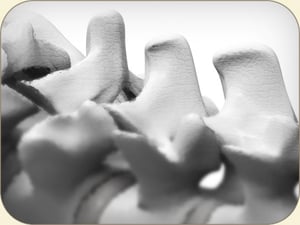According a systematic literature review in the Journal of Spine Surgery, the fast-growing 3D printing industry could lead to enhanced spine implants, decreased surgical time, and improved patient outcomes in spine surgery. Here are eight trends in the spine surgery industry for 3D printing:

- 3D printing is currently used for surgical planning, intraoperative surgical guides, customized prostheses, and “off-the-shelf” implants. Issues may continue to evolve including financial impact, time to design and print, materials selection and bioprinting.
- 3D printing is becoming more useful in spine surgery as the complexity of the pathology increases.
- It is most frequently used in the preoperative planning stage. Using 3D printing to assess the complex the pathologies on a model overcomes various challenges that are associated with traditional 3D imaging.
- 3D printed surgery guides may offer an alternative to intraoperative imaging and provides a convenient, low-cost way to improve pedicle screw placement accuracy.
- In the review, implant stability increased while complications such as stress shielding, and subsistence were minimized.
- Spinal prosthetic manufacturers are starting to use 3D printing to optimize the properties of the implantable devices. It also allows for the manufacturing of previously impossible-to-create geometries.
- 3D printing can produce enough implants to be competitive in the marketplace. It is expected to be able to incorporate additional features such as porous matrices and mechanical properties.
- 3D printing will increasingly use cells, growth factors, and biomaterial to create living tissue.
Read the full article here.
For more of the latest 3D printing medical device news join our LinkedIn community!



